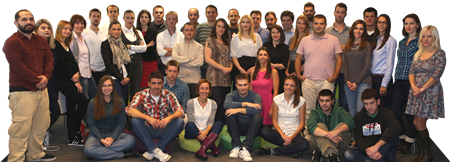Max Kahlke 1892-1928 / NEMAČKI EKSPRESIONIZAM
| Cena: |
| Želi ovaj predmet: | 8 |
| Stanje: | Polovan bez oštećenja |
| Garancija: | Ne |
| Isporuka: | BEX Pošta DExpress Post Express Lično preuzimanje |
| Plaćanje: | Tekući račun (pre slanja) Ostalo (pre slanja) Pouzećem Lično |
| Grad: |
Novi Sad, Novi Sad |
Godina izdanja: Ostalo
ISBN: Ostalo
Jezik: Nemački
Oblast: Slikarstvo
Autor: Strani
Dobro očuvano kao na slikama
Vide se blagi tragovi godina na koricama
Stanje jedetaljno uslikano
Retko u ponudi
Titel:
Max Kahlke 1892-1928.
Zustand: leichte Gebrauchsspuren
Verlag: Itzehoe, Selbstverlag
Seiten: 128
Gewicht: 500 g
Erschienen: 1992
Einband: Taschenbuch
Sprache: Deutsch
Beschreibung: Kreismuseum Itzehoe (Hrsg.) und Hans-Peter Widderich
Max Kahlke 1892-1928. Das religiöse Werk
Maks Kalke
Max Kahlke was a creative visual artist. Max Kahlke was born in 1892 and died in 1929. Artists like Benita Koch-Otte, Florence Tuttle Hubbard, Piero Fornari, Ethel Kathleen Cole, and Evariste Jonchere were also born in 1892.
Further Biographical Context for Max Kahlke
Born in 1892, Max Kahlke was primarily inspired by the 1900s and 1910s. The first decades of the twentieth century were defined by the energetic development of visual and pictorial art. These years were an time of experimentation, with artists exploring into ideas surrounding Post-Impressionism, Expressionism and Abstraction. These innovations took hold with artist communities and collectives across the globe, with many groups developing different methods of communicating their ideas. The first twenty years of the twentieth century are seen as the period in art history where modernist and modern ideas first began to have cultural effects. They were a prolific time in the art world, and industrial advances such as mechanisation led to other disciplines such as architecture, led by the work of Le Corbusier and Gerrit Rietveld, to grow at an equally high rate. The idea of a shared discipline across all modes of art was epitomised in the Bauhaus movement, which became a predominant way of thinking about art. These philosophies that we associate today with modern and contemporary art can be traced back to the diverse range of artworks produced at this time.
Apstrakcija avangarda
Nemacka umetnost prve polovine xx veka
International shipping
Paypal only
(Države Balkana: Uplata može i preko pošte ili Western Union-a)
1 euro = 117.5 din
For international buyers please see instructions below:
To buy an item: Click on the red button KUPI ODMAH
Količina: 1 / Isporuka: Pošta / Plaćanje: Tekući račun
To confirm the purchase click on the orange button: Potvrdi kupovinu (After that we will send our paypal details)
To message us for more information: Click on the blue button POŠALJI PORUKU
To see overview of all our items: Click on Svi predmeti člana
Ako je aktivirana opcija besplatna dostava, ona se odnosi samo na slanje kao preporučena tiskovina ili cc paket na teritoriji Srbije.
Poštarina za knjige je u proseku 225 dinara, u slučaju da izaberete opciju plaćanje pre slanja i slanje preko pošte. CC paket je 340 dinara. Postexpress i kurirske službe su skuplje ali imaju opciju plaćanja pouzećem. Ako nije stavljena opcija da je moguće slanje i nekom drugom kurirskom službom pored postexpressa, slobodno kupite knjigu pa nam u poruci napišite koja kurirska služba vam odgovara.
Ukoliko još uvek nemate bar 10 pozitivnih ocena, ili imate negativnih ocena, zbog nekoliko neprijatnih iskustava, molili bi vas da nam uplatite cenu kupljenog predmeta unapred.
Novi Sad lično preuzimanje (pored Kulturne stanice Eđšeg) ili svaki dan ili jednom nedeljno zavisno od lokacije prodatog predmeta (jedan deo predmeta je u Novom Sadu, drugi u kući van grada).
Našu kompletnu ponudu možete videti preko linka
https://www.kupindo.com/Clan/H.C.E/SpisakPredmeta
Ukoliko tražite još neki naslov koji ne možete da nađete pošaljite nam poruku možda ga imamo u magacinu.
Pogledajte i našu ponudu na limundu https://www.limundo.com/Clan/H.C.E/SpisakAukcija
Slobodno pitajte šta vas zanima preko poruka. Preuzimanje moguce u Novom Sadu i Sremskoj Mitrovici uz prethodni dogovor. (Većina knjiga je u Sremskoj Mitrovici, manji broj u Novom Sadu, tako da se najavite nekoliko dana ranije u slucaju ličnog preuzimanja, da bi knjige bile donete, a ako Vam hitno treba neka knjiga za danas ili sutra, obavezno proverite prvo preko poruke da li je u magacinu da ne bi doslo do neprijatnosti). U krajnjem slučaju mogu biti poslate i poštom u Novi Sad i stižu za jedan dan.
U Novom Sadu lično preuzimanje na Grbavici na našoj adresi ili u okolini po dogovoru. Dostava na kućnu adresu u Novom Sadu putem kurira 350 dinara.
Slanje nakon uplate na račun u Erste banci (ukoliko ne želite da plaćate po preuzimanju). Poštarina za jednu knjigu, zavisno od njene težine (do 2 kg), može biti od 170-264 din. Slanje vise knjiga u paketu težem od 2 kg 340-450 din. Za cene postexpressa ili drugih službi se možete informisati na njihovim sajtovima.
http://www.postexpress.rs/struktura/lat/cenovnik/cenovnik-unutrasnji-saobracaj.asp
INOSTRANSTVO: Šaljem po dogovoru, ili po vašim prijateljima/rodbini ili poštom. U Beč idem jednom godišnje pa ako se podudare termini knjige mogu doneti lično. Skuplje pakete mogu poslati i po nekom autobusu, molim vas ne tražite mi da šaljem autobusima knjige manje vrednosti jer mi odlazak na autobusku stanicu i čekanje prevoza pravi veći problem nego što bi koštala poštarina za slanje kao mali paket preko pošte.
Ukoliko kupujete više od jedne knjige javite se porukom možda Vam mogu dati određeni popust na neke naslove.
Sve knjige su detaljno uslikane, ako Vas još nešto interesuje slobodno pitajte porukom. Reklamacije primamo samo ukoliko nam prvo pošaljete knjigu nazad da vidim u čemu je problem pa nakon toga vraćamo novac. Jednom smo prevareni od strane člana koji nam je vratio potpuno drugu knjigu od one koju smo mu mi poslali, tako da više ne vraćamo novac pre nego što vidimo da li se radi o našoj knjizi.
Ukoliko Vam neka pošiljka ne stigne za dva ili tri dana, odmah nas kontaktirajte za broj pošiljke kako bi videli u čemu je problem. Ne čekajte da prođe više vremena, pogotovo ako ste iz inostranstva, jer nakon određenog vremena pošiljke se vraćaju pošiljaocu, tako da bi morali da platimo troškove povratka i ponovnog slanja. Potvrde o slanju čuvamo do 10 dana. U 99% slučajeva sve prolazi glatko, ali nikad se ne zna.
Ukoliko uvažimo vašu reklamaciju ne snosimo troškove poštarine, osim kada je očigledno naša greška u pitanju.
Predmet: 65896289











